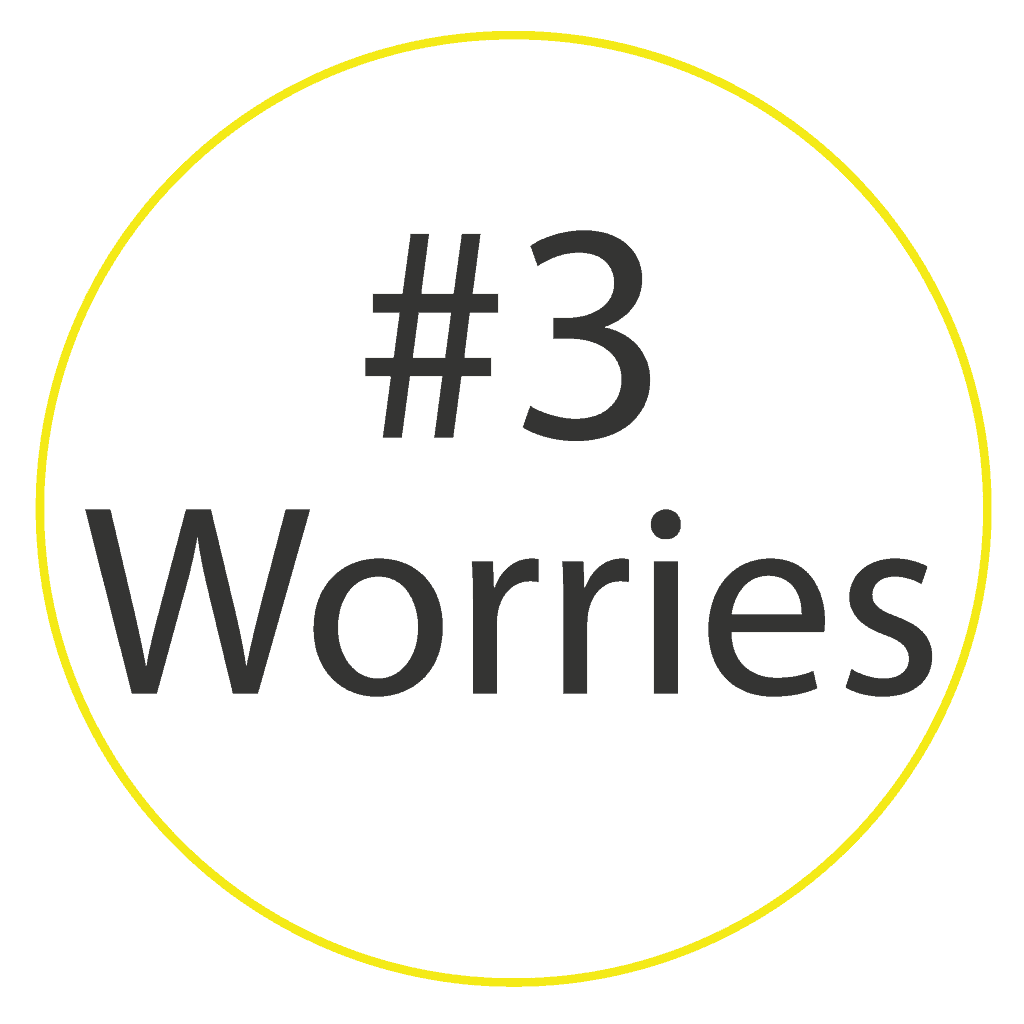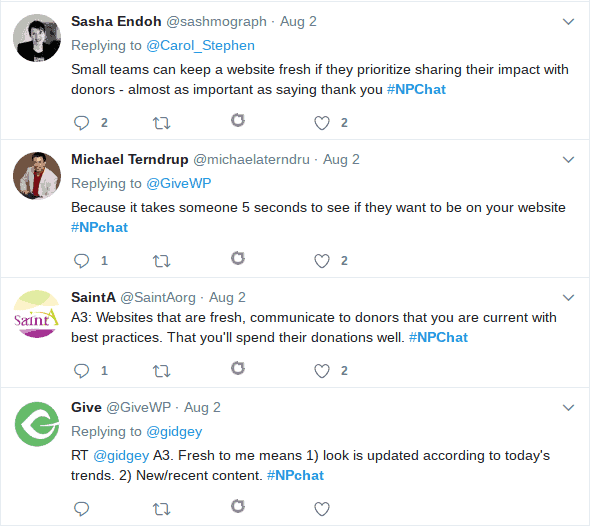All great content marketing has one thing in common.
It speaks to a specific audience. It addresses their needs. It solves their problems.
In order to accomplish this, we need to first understand our prospective buyer and the dimensions that make them unique.
We need to craft a buyer persona.
Unfortunately, many buyer persona examples are trite and not very useful. They may be a hodgepodge of demographic data given a funny name or a simple job title and a mock photograph.
But let’s move past that.
Let’s discuss how to create truly insightful buyer personas that will give us a better understanding of our audience at a deep level.
With this kind of persona, we can speak more directly to that audience on a personal and professional level.
In this piece, we’ll look at a buyer persona example and walk through how to craft an insightful profile that can be used to inform your content marketing strategy and direct your content creation.
The Buyer Persona Basics
I mentioned before how most people do buyer personas.
They pick a funny, descriptive name like “Marketing Mike”. Then, they ascribe some generic demographic data. They say that Mike is a Marketing Manager and he’s 32 and makes $75,000 per year. Oh–and he lives somewhere in the Midwest.
That’s all interesting data to have, but that demographic data is probably just a guess or some kind of statistical average at best. But, more importantly, it’s not very insightful.
Sure, if I am selling something directly to Mike–like a car or a watch or a trip–then it might be useful to know what his profession and income are so I can try to target my content and my specific offers. But, in most cases, this generic kind of buyer profile isn’t really all that helpful for understanding his actual needs, desires, or concerns.

So, our process of developing personas doesn’t focus on those aspects of our buyer personas.
We usually outline basic details for each persona that we develop, but for the bulk of the profile we try to identify three key dimensions for every persona, which we then can use to gain insight into their needs and how to communicate best with them.
Let’s begin this process by outlining the specifics of our buyer persona example.
For this exercise, we’ll be creating a profile for Nina, a marketing director for nonprofit organization. So, we begin by defining the person and some general information about them.
| Persona | Nonprofit Nina |
| Description | Marketing Director Small-Medium Nonprofit |
At this point, we want to start to understand this persona by digging into three key dimensions:
- Role
- Goals
- Worries
Although they may seem like simple dimensions for defining a person, they turn out to be remarkably flexible and insightful when employed correctly.
Let’s look at how each one offers an interesting look at the persona as a whole and moves us closer to understanding them.
Buyer Persona Worksheet
Build your own insightful buyer personas with our free worksheet.
Role – Understanding Their Position
 The first set of characteristics we want to define about our person is their role within an organization, within the world, or within a group.
The first set of characteristics we want to define about our person is their role within an organization, within the world, or within a group.
We can see right away that a person’s “role” can be interpreted to mean many things. And this is what makes it powerful. The aspects of this person’s role should be defined as they relate to your specific product, service, or market/industry. That’s not to say that this dimension (or the others) must be confined by what you’re selling, but that how you define each dimension should maintain a lens toward the ultimate business objective.
As an example, if you are creating buyer personas for a healthcare company, the persona’s role at work (e.g., what they do all day) may not be relevant or insightful. Instead, you may want to focus on their role within the family unit or among friends, which could inform you about how they think and talk about healthcare and with whom.
In the context of B2B marketing, this is also important because it allows us to parse out different audiences even if they have the same or similar titles. We all know that the same job title can carry many different meanings, so their “role” speaks more to their functional job within the organization.
It’s not enough just to know that someone is a Marketing Director. For a tech startup, this may mean that they’re responsible for orchestrating all aspects of marketing and growth–they may be the top authority on all marketing activity. In another type of organization, they may be primarily responsible for graphic design and writing and work under a chain of Vice Presidents and a CMO.
This begins by understanding their job title but can be extrapolated further by defining the specifics of their actual functional role in the organization. It may be the case that those carrying similar titles are actually tasked with much different responsibilities.
| Persona | Nonprofit Nina |
| Description | Marketing Director Small-Medium Nonprofit |
| Role |
|
Understanding the role that the person plays is hugely important to this process, because it allows us to start to get inside their head and consider what responsibilities they have. From there, we can start to understand their goals and worries.
Goals – Understand Their Desires
 Everyone has goals.
Everyone has goals.
Many times, we think of these goals in terms of specific metrics or responsibilities placed upon someone within a company.
But there are also personal goals that many of us carry, which are useful for understanding audiences at a more personal level or for defining a persona within a B2C audience that may not be pursuing professional achievements.
Think deeply about the kind of person that you are trying to reach and what motivations they have.
Again, we will see that something as simple as a job title does not adequately tell us about the goals of a specific buyer.
While a Marketing Director for a tech startup might have goals that relate to customer acquisition or scale, Nina has different goals related to building community, awareness, and the donor base.
| Persona | Nonprofit Nina |
| Description | Marketing Director Small-Medium Nonprofit |
| Role |
|
| Goals |
|
Having these goals in mind will give us a strong understanding of what this particular person is interested in achieving and how we can help them by providing relevant content.
But, this is just the start. Next, we’ll look at the worries that this persona has and how we can help solve their problems.
Worries – Solve Their Problems
 Lastly, it’s useful to consider what worries a specific persona has.
Lastly, it’s useful to consider what worries a specific persona has.
What keeps this person up at night?
It’s often said that in marketing, you should focus on selling the benefits of your product or service–not the features.
Understanding the worries of your persona allows you to do this.
By speaking to these anxieties or frustrations, you’re able to provide a specific solution to a problem.
You’re not selling a diet plan, you’re selling a healthier life.
You’re not selling a widget, you’re selling a way to meet year-end numbers.
These worries can take many different forms. They may be worries about their rank or accomplishments at work, or they may be worries related to a specific product or service (e.g., will this thing do what I actually need it to?)
Think through these worries and create a list of trouble areas for your persona. This will give you a lot of insight into how you can best serve their needs by helping them solve their problems.
| Persona | Nonprofit Nina |
| Description | Marketing Director Small-Medium Nonprofit |
| Role |
|
| Goals |
|
| Worries |
|
Understanding our buyer persona’s worries is especially insightful. Not only do now have a picture for what they are trying to achieve, but we can see what roadblocks exist in that process.
Researching Your Buyer Personas
If you’ve gotten to this point in the guide, then you’re likely thinking one thing: “Okay, but how?”
So, we’ve looked at what a detailed persona would look like, but we haven’t discussed how you find the insights that you need to fill in the blanks.
You can’t just go shoving in whatever comes to mind to describe a person’s role, goals, or worries. You need to have some level of insight into that persona and their place in the world.
In some cases, the elements are rather intuitive (or at least seem to be). Or you may even be targeting people who have a similar role to yourself, which gives you a special leg-up on mapping out that particular persona.
But, no matter how much you know (or think you know) about your personas, it’s always good to go into the process in an objective way. Look for proof and validation of existing ideas through primary sources.
I’m not going to go super in-depth into how you can gather these insights, but here are some methods you can use in order to start to research and understand your persona. Plus, some links to relevant resources.
Keyword Research
One simple and free way to research your audience is to do keyword analysis.
We use keyword data a lot when putting together content marketing and SEO strategies by mapping specific keywords to key pieces of content that we’ll be creating. But, if you consider what we are really doing here, it is research into the questions, thoughts, and ideas that our prospective buyers are searching for online.
Using the Google Keyword Planner, we can see search volume for specific searches as well as suggested and/or related searches that may give us further understanding of what information this buyer is searching for.
While keyword data is rather granular, it is difficult to get incredibly precise insights from this search data alone.
If you’re not familiar with how to conduct keyword search, check out this video from Moz.
Online Communities
The Internet is rife with communities like Reddit, Quora, and others that have targeted and specific subcommunities. These are a gold mine for understanding and gaining insight into your key buyer personas.
If we look to Reddit, we can find discussions related to our nonprofit persona:

Likewise, a quick search on Quora shows the questions and responses that people are asking related to marketing for nonprofits:

Better yet, you can post discussions or questions in these communities and get some direct feedback about specific topics you may think are relevant.
Social Listening
Similar to mining online communities for insights, we can also look at social media as a sort of decentralized stream of conscious from our target buyers.
Twitter is an especially useful platform for this kind of listening, because it offers an open search that lets you see tweets from anyone, so long as they are not set to private.
One great way to do this is to find community “chats” or Twitter events where people have discussions and answer questions.
In our example persona, we may comb through the search results #npchat, a popular weekly discussion for nonprofits, to learn more about nonprofit issues.

Facebook is a bit more difficult because of various privacy settings and policies, but it can still be useful. You can search inside a targeted group of your buyers to see the conversations they’re having about specific topics.
In our buyer persona example, we may look for insights about Nina by searching the Nonprofits Happy Hour group, which offers a lot of great discussion around issues facing nonprofit organizations.
Surveys
Another great–and relatively simple–way to gain some insights about your audience is to conduct a survey.
Many people fear surveys because they seem like big undertakings. But in reality, they don’t need to be. A relatively simple survey given to even 20 or 30 people can shed a lot of light on underlying concerns, problems, and aspirations.
To conduct a survey, you only need a handful of well-crafted questions. You can find participants by reaching out to your existing audience, asking people through online communities or social media, or even reaching out directly to people who are in your target audience(s).
For more on running an effective survey, check out the guide from Zapier.
Interviews
The most intensive, but probably most insightful, way to gain understanding is to have one-on-one conversations with you audience.
Like surveys, you shouldn’t fear the prospect of doing an interview. It doesn’t need to be some massive campaign. Try to talk to 5 or 10 people and learn about their needs and wants.
Prepare some questions in advance that will help you scope out their role, goals, and worries.
Then, reach out to your existing community or a targeted list of prospective interviewees. You can conduct interviews by phone, in person, or through a video conferencing tool.
There’s a super kick-ass guide to running persona interviews published by Cintell.
Using Your Buyer Personas
Once we’ve done all of this research and compiled buyer personas for all of our different audiences, now we have to do something with that information.
The great thing about creating these profiles is that they can be used to inform many different parts of your marketing, brand, and product strategy.
But, in this context, we’re going to look specifically at how they relate to content marketing.
Identify key content opportunities
You may have noticed as we went through this process, that we tried to get as specific as possible about the roles, goals, and worries that we outlined in our buyer persona example.
This is very intentional.
Using this framework to create buyer personas is especially effective for content marketing because the insights that you uncover are often directly correlated with key content opportunities.
As an example, if we look back at some of our goals for our persona of Nonprofit Nina, we can identify content topics and themes that are likely to speak to her needs.
| Goal | Content Ideas |
| Increase giving |
|
| Retain current donors |
|
| Raise brand awareness |
|
Each point that we define in the persona will point us toward possible content ideas that we can use to develop a content marketing strategy and plan to target that segment of our audience.
But that’s not the only important part of having this profile in place.
Speak the persona’s language
Have you ever read a piece of content that rambled on about some problem that “all marketers” or “all moms” supposedly face, but it seemed completely foreign to you?
This is one of the challenges creating great, authentic content for your target audience. Unless you really have a strong understanding of who you’re talking to and what their life is like, you can easily jump the rails and speak a completely different language.
This is where buyer personas come into play.
They help inform us about the audience we’re targeting so we can speak more directly to them without getting derailed.
Focus on what your buyer persona uncovers about your target audience. Look for opportunities to key in on the language that the person uses, how they describe specific thoughts, and the context of the whole process.
Buyer Persona Worksheet
Build your own insightful buyer personas with our free worksheet.
Share Your Approach
How do you go about the process to develop great, usable, and insightful buyer personas?
Share some of your tips, tricks, and strategies in the comments.
Get more kick-ass content from us
Subscribe to our email list and get regular updates.
No spam or BS. Just great, insightful articles.